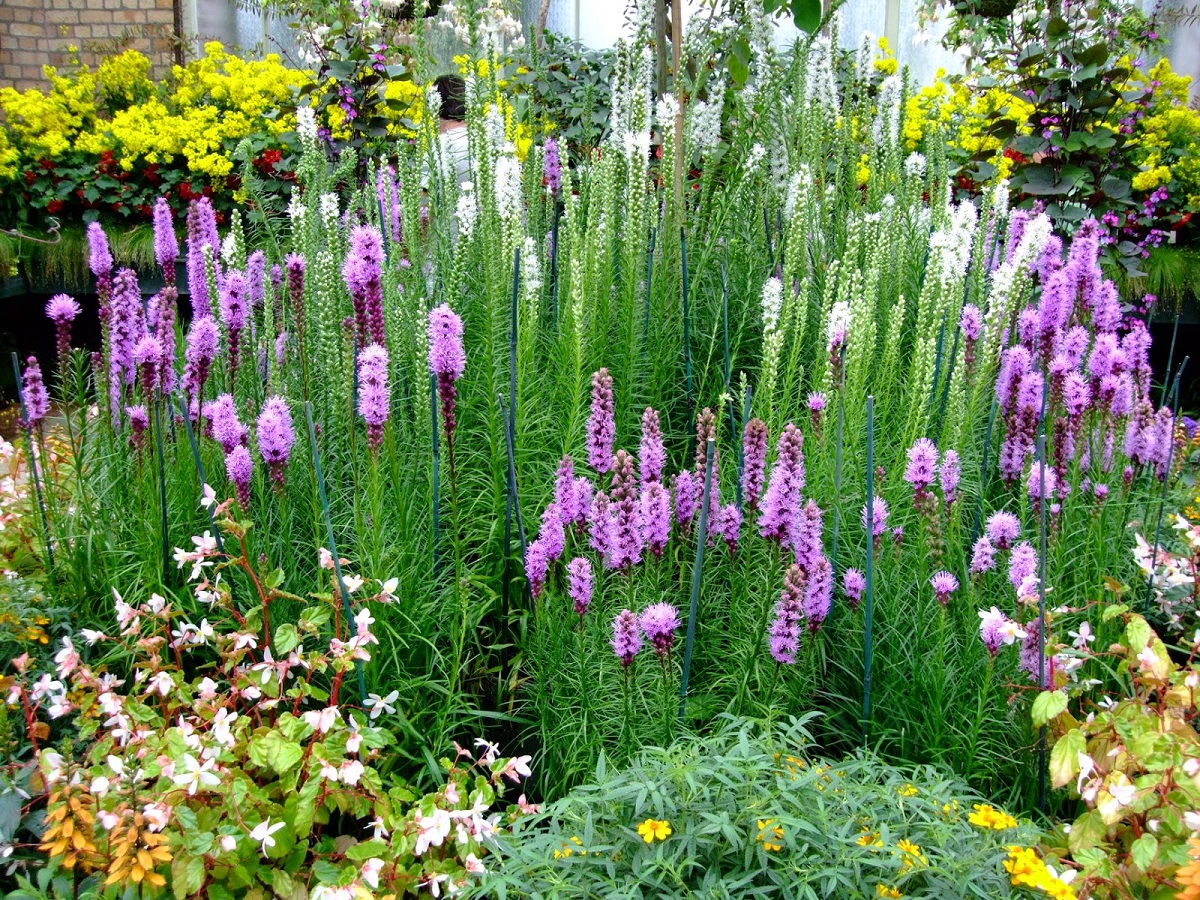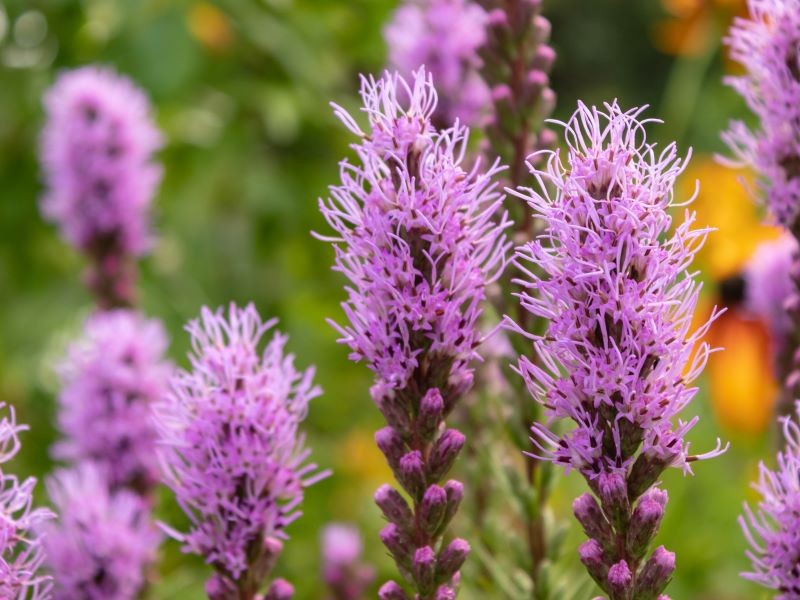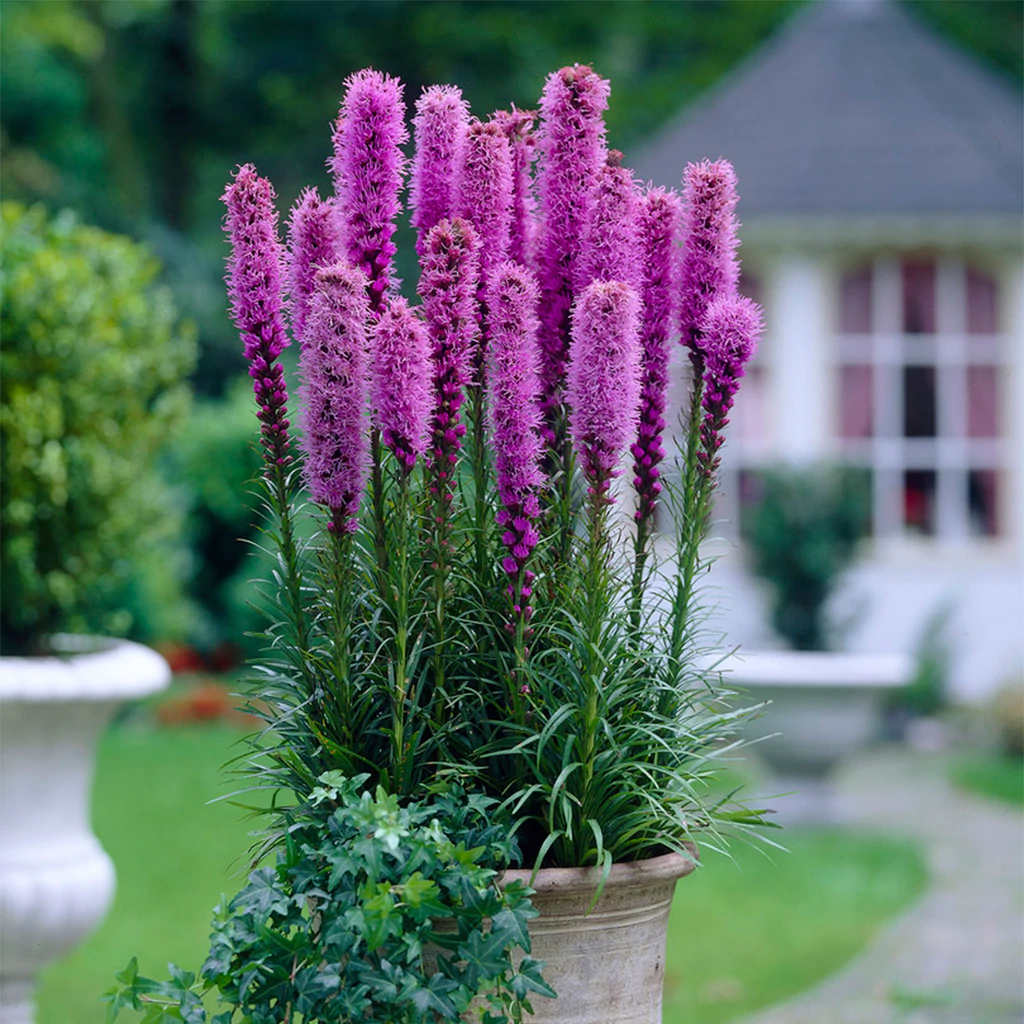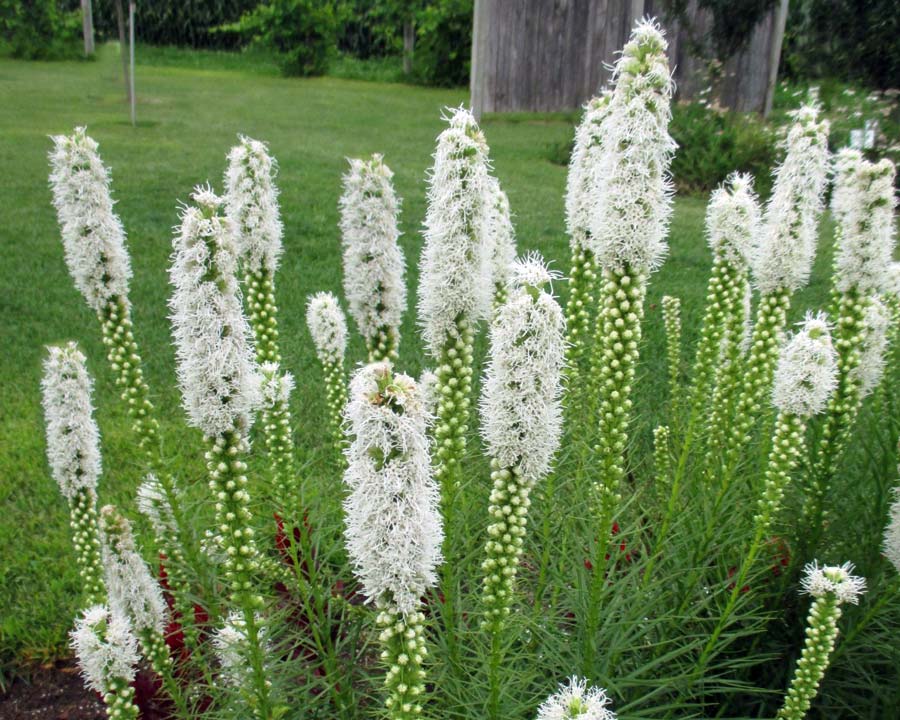Liatris Spicata - Learn How to Care For Dense Blazing Star
Liatris spicata is a plant naturally growing in prairie areas. It forms a characteristic dense cluster of leaves above the ground, from which a vertical spike grows. That's where blazing star flowers appear. Gayfeather is a highly valued element of many garden arrangements. It amazes with a great number of melliferous flowers which attract many beneficial insects.

Blazing star in the garden
Dense blazing star, also known as gayfeather or Liatris spicata is a bulbed perennial from the Asteraceae plant family. It grows naturally mostly in North America, usually on prairies. Because of its unique appearance, it’s becoming an increasingly popular element of home yards.
The plant is relatively high – it grows from 60 to even 120 centimeters tall. During the first stage of growth it develops thick leaves that form peculiar tufts. From them, stiff stems emerge.
The plant has distinct, strongly developed flowers, which grow up to 30 centimeters tall. As a characteristic feature, the buds grow from top to bottom. Butterfly enthusiasts appreciate this plant greatly – its flowers are melliferous and attract many butterflies during the blooming season.

Liatris spicata - the most popular cultivars
There are many cultivars of blazing star plants. The two of them mentioned below are the most popular.
- Kobold – this variety is also known as purple or violet gayfeather. The name, of course, results from the color of the flowers. It reaches 50 centimeters of height. It’s a perfect addition to garden flowerbeds and rock gardens.
- Alba is another popular variety of this plant. Some call it white blazing star. It grows up to 90 centimeters tall, and its white flowers are its main advantage.
Dense blazing star – does it need any special conditions?
Liatris spicata is a highly tolerant plant, which can grow perfectly both in full sun and half shade. Keep in mind, though, that it might grow poorly in full shade and develop fewer flowers.
The plant feels best in rich and medium-rich soils. What’s important is that the ground should be permeable and relatively dry. Gayfeather prefers slightly acidic soils. It won’t grow well in swampy or moist areas – the bulbs simply rot in such conditions.
Because of the plant’s origins, dense blazing stars can endure dry spells well. But if hot temperatures last very long, make sure to water the plant to prevent drooping leaves.

Can you grow gayfeather in a pot?
Liatris spicata is a perfect plant to cultivate in a container. One can form an interesting arrangement with it, e.g., as a patio decoration. A sunny spot makes perfect growing conditions for this plant. Make sure the container is large enough, so the plant can freely develop its root system.
When to plant blazing star bulbs?
If you want your garden to look excellent in summer, dense blazing star is a perfect choice. When to plant the bulbs? The best time for planting liatris spicata is mid-April. When deciding on a location, remember it should be optimal for the plant’s proper growth. If you plant gayfeather bulbs in April, expect to see the plant’s unusual flowers in July.
How to water and fertilize dense blazing star?
Liatris spicata can endure very low temperatures. Dry locations aren’t a problem for this plant. Nonetheless, you should still water it during dry spells, so the plant grows in optimal conditions. Otherwise, the leaves might get dry and fall off. Still, make sure to water the plant in moderation, as liatris doesn’t like too wet ground. It might cause its bulb to rot.
Fertilizing is an equally simple matter, regarding this plant. Dense blazing star is self-sufficient, therefore, it doesn’t need excessive feeding. Regardless, fertilize the plant at least once per year. Thanks to this, blooming is more intense.

How to propagate liatris spicata?
Dense blazing stars can be propagated using the vegetative method. In practice, it means the plant is multiplied by separating its bulbs. If you want to propagate the plant, dig out the bulb and divide it into several smaller pieces. The process is not complicated. This way, you can get many new bulbs, ready for replanting.
What are the most common diseases of gayfeathers?
Liatris spicata is vulnerable mostly to fungal diseases. They are typically a result of mistakes in cultivation, e.g., planting liatris in too damp areas. If the disease is caught in its early stages, it can be hindered by stopping watering or moving the plant to a different location.
Are blazing stars prone to any pests?
Creatures and pests living underground are the biggest threat to liatris spicata. The bulbs might get eaten whole or nibbled by e.g., moles or voles, which causes the plant to die back.
Separating the pests from the bulbs is the most effective way to resolve the problem. You can do it e.g., by planting gayfeather bulbs in pots dug into the flower beds. Special nets placed in the soil are also popular methods.
The plant can also get attacked by aphids. In this case, you should spray the affected plants with e.g., soapy water or onion brew. If these methods don’t work, use special chemical pesticides.

📍 When to prune liatris spicata?
Liatris spicata should be pruned after it finishes blooming. By deadheading the flowers, you prevent spreading the seeds all over the garden. The second cut is done after vegetation period – that's when the entire aboveground section of the plant should be trimmed.
📍 When to plant gayfeather bulbs?
Plan planting liatris bulbs for early spring. Mid-April is the best time for planting. Blazing stars bloom in summer – in July and August, and keep producing flowers until October.
📍 When to replant blazing stars?
Replanting and propagating blazing stars should be planned carefully. You can decide to move the plant to a new place after you noticed its growth is hindered or if blooming got weaker.
📍 What is the best soil for liatris spicata?
Liatris spicata is a highly tolerant plant regarding the soil. We recommend rich and permeable soil. Dry and sandy ground with some gravel is a perfect option.
Featured articles




